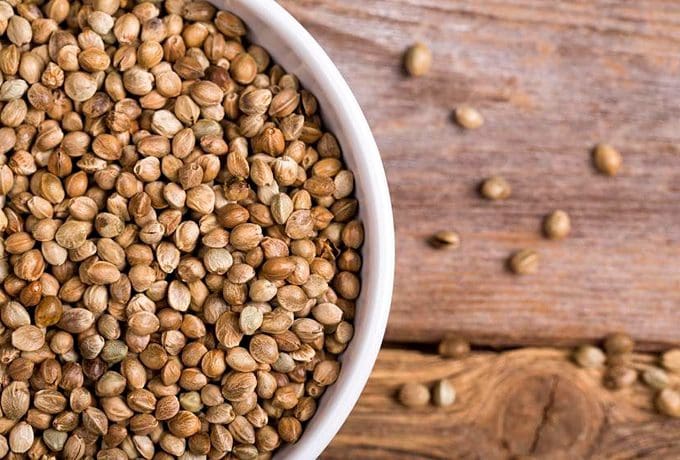Although the cannabis plant is thousands of years old, feminized seeds are a relatively recent phenomenon. They were launched in the 1990s following extensive testing. Growers of the first few feminized seeds were unsure if they would produce a high-quality product or if they would all develop into hermaphrodite plants with poor potency.
We know that feminized cannabis seeds can grow quite well, and the quality is only becoming better as growing techniques improve.
What are Feminized Seeds?
Traditionally, cannabis seeds are either male or female. Male cannabis plants were deemed duds in comparison to female marijuana plants since female marijuana plants produced buds that boast a considerably higher concentration of THC, the primary psychoactive compound present in marijuana.
Male cannabis plants generate pollen sacs, which fertilize female cannabis plants. The female, once pollinated, will develop additional seeds in place of flower buds. Feminized seeds are genetically modified to solely produce female plants (with a success rate of over 99 percent). Their high THC concentration increases the potency of the cannabis blooms they produce.
How do Feminized Seeds Work?
Feminized cannabis seeds were developed with the premise that if female marijuana plants were forced to produce pollen like male marijuana plants, they would only contain female chromosomes. Rodelization prolongs the female plant’s blooming period, allowing self-pollination to begin. This female-created pollen may be used to fertilize flowers and produce feminized seeds. According to multiple studies, farmers can produce feminized seeds by spraying a female plant with colloidal silver or silver thiosulfate.
Feminized seeds – Benefits:
- Cost-effective since there are fewer males to discard
- THC/CBD concentration that is higher
- There’s no need to check the sex – it’s female!
- Taste and yield are predictable
Feminized seeds – Drawbacks:
- Pricier than typical marijuana seeds
- Yield is determined by the quality of the seeds
Feminized Seed Buying Guide
Growing seeds for personal use is all about ease and quality. First, take note of the THC and CBD levels in each strain. THC levels in the moderate range are around 19% or slightly higher. This may be ideal for an experienced cannabis enthusiast, but it may be too potent for someone who is used to delta eight or extremely low-quality marijuana.
CBD, on the other hand, has a unique potency. Furthermore, some early or definitive research (depending on who you ask) shows that CBD can aid in managing a variety of illnesses.
Indica, Sativa, or Hybrid?

Sativa strains typically provide a “head high” that is more creative and stimulating. Indica strains provide a relaxing, calming effect with a “body high.” Indoors, Indica plants grow shorter and quicker. The leaves are broad and dark green in color. Sativa plants require more sunshine outside.
How Much Space Do you Have to Grow Marijuana?
The vegetative condition of the cannabis plant influences its eventual size between germination and blooming. When the blooming stage begins, all resources and energy are directed into the production of buds. First, consider how large you would like your cannabis plant to grow. Outdoor plants typically grow to reach 10 feet tall, but they can grow considerably taller if encouraged. Consider an area of at least 2 x 2 x 3 feet for a smaller space indoors. The larger the pot, the larger the crop, but going overboard might reverse. Next, choose a plant pot with ample space for the root system to grow. On average, 11-liters is a decent beginning point that will allow the plant to develop to around three feet tall.
Yield Size
The size of your plant has a direct impact on its yield. Projected yield sizes are usually listed on the product pages for feminized cannabis seeds at most online retailers. 300g per plant is typically ideal, or 400-500 grams per square meter.
Furthermore, when you initially harvest a bud, excess water accounts for around 75% of the entire gram weight. So, after drying and curing, you get approximately 25% of the initial wet yield.
Growing Plants Indoors
Even if cannabis seeds are allowed in your state, some individuals prefer indoor cultivation since it will enable them to manage the temperature. Cannabis plants flourish in temperatures about 75 degrees Fahrenheit and with consistent air circulation. In addition, a fan may be used to help ventilate an inside area or garage.
Growing in the Open
If you wish to grow outside, choose a spot with good lighting, such as a balcony or rooftop (to keep your plants out of sight of neighbors) or a garden plot, which allows your plants to thrive alongside other vegetables.
Indoor Versus Outdoor Strains
The choice between indoor and outdoor fem strains is determined by the time and money available. Some growers choose indoor growing because it allows them to:
- Improved temperature and humidity management
- It shields your plant from the elements
- Year-round growth
- It grows at a quicker rate
Others choose outdoor cultivation because it provides:
- Increased yields
- Lowering of electricity bills
- Larger plants
- A more environmentally friendly procedure
Conclusion
If you like CBD or THC products, why not try purchasing marijuana seeds and producing your own cannabis plant? Then, you may see how cultivating your favorite cannabis plant can be just as enjoyable as ingesting it.

